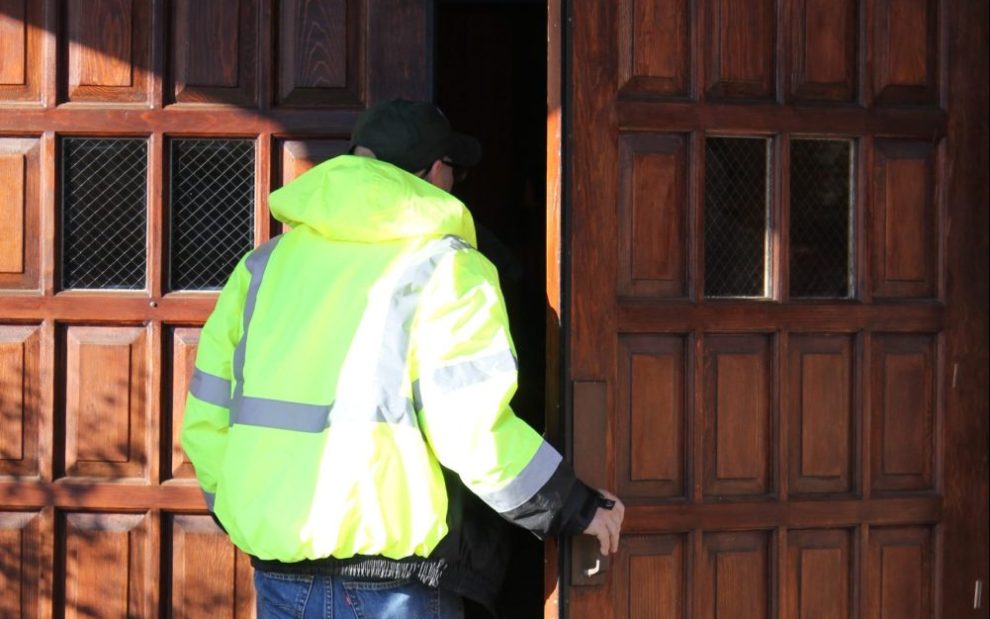On October 1, 2017, an assailant opened fire on a music festival in Las Vegas, killing more than 60 people and wounding hundreds of others. At our parish staff meeting the following Tuesday, I raised the question of safety in our parish. I was still relatively new to the community and didn’t know our parish safety protocol or emergency response practices. My concerns were quickly dismissed when other staff members, including the pastor, insisted, “That will never happen here.”
But we can’t continue to play that card. As I write this, there have been at least four multi-casualty acts of violence across the country that have received national attention in the last week alone. And it seems like no one is immune, including places of worship.
The U.S. Department of Homeland Security Cybersecurity and Infrastructure Security Agency (CISA) conducted a comprehensive study of attacks on houses of worship over a period of 10 years and shared some significant findings and trends. Between 2009 and 2019, there were 37 acts of targeted violence against houses of worship in the United States, including 64 deaths. Fifty-four percent of the attacks were an armed assault of some kind, including five attacks which qualified as mass shootings. Sixty-seven percent of the attacks were motivated by hatred of a particular racial or religious identity, and 22 percent were connected to a domestic abuse or personal crisis (from Mitigating Attacks on Houses of Worship: Security Guide, published in December 2020 by the U.S. Department of Homeland Security).
While it is impossible to entirely prevent tragedy, there are things that communities can do to help mitigate violence. Grounded in our commitment to service of others, we must live the basic realities of Catholic social teaching by upholding the life and dignity of all people and recognizing the profound solidarity that unites all creation. This includes working for comprehensive gun safety and regulation, as well as better meeting the needs of all who struggle with mental and behavioral health. Even more fundamentally, we must grapple with the significant reality that a welcoming environment is not synonymous with lack of safety or preparedness.
Christ calls us to vulnerability, both as individuals and as a church community. This is the essence of Christ’s self-gift on the cross where we are invited to embrace humility and lower ourselves, to choose weakness over strength, littleness over power. Vulnerability is the basis of incarnation. Vulnerability is the foundation agapic love.
This is where we need to make an important distinction. We have seen far too many times, especially in our church, where vulnerable people were seriously wounded and betrayed. With this, we cannot embrace vulnerability in such a way that it allows for personal or communal hurt. In this sense, vulnerability is not about seeking or imparting hurt or pain. Instead, as Christians we are called to practice healthy vulnerability.
We practice healthy vulnerability by being honest and transparent with ourselves, others, and God. We practice healthy vulnerability when we name the times when we cling to power and privilege, even at the expense of hurting or marginalizing someone else. We practice healthy vulnerability when we are unafraid to admit when selfish ambition prevents us from seeking the common good of all. Healthy vulnerability is not about seeking hurt or pain or woundedness. Rather, healthy vulnerability is grounded in honest awareness of ourselves and others.
We see this, perhaps most prophetically, when the Second Vatican Council challenged the church to respond to the signs of the times. The groundbreaking and prophetic Gaudium et Spes (The Pastoral Constitution on the Church in the Modern World) opens with this challenge, noting, “The joys and the hopes, the griefs and the anxieties of the [people] of this age, especially those who are poor or in any way afflicted, these are the joys and hopes, the griefs and anxieties of the followers of Christ.” No matter how hard one might try, it is impossible to separate the realities of the world and the realities of the people of God. The leaders of the Council recognized this, going so far to even state, “this council can provide no more eloquent proof of its solidarity with, as well as its respect and love for the entire human family with which it is bound up, than by engaging with it in conversation about these various problems.”
As the Catholic Church (and as a church) we have the responsibility to respond to the signs of the times by navigating welcome and safety in our communities, with preparedness as an important part of this negotiation. And we do this through healthy vulnerability, by realistically looking at ourselves and our community with honesty, unafraid of what we might learn or discover. More practically, here are three simple ways to begin (or continue) thinking about safety preparedness as a parish community. It is important to remember that these are general starting points for initial discussion and that each community should follow guidance from their diocese and local law enforcement.
Form a safety committee.
There are already people in your parish community who are concerned about safety, many of whom might already have experience in this area. Form a team consisting of parish staff members and volunteers who are interested in discussing the reality of safety in your house of worship. It is important, like all ministries in the church, that this not be limited to ordained clergy or members of the parish staff. The experiences community members are essential, especially in navigating the relationship between welcome and safety. This is also an opportunity to invite parishioners who serve as law enforcement officers, firefighters, and paramedics to collaborate. Take some time to discuss your unique parish community, as well as the local political and ecclesial context within which your church exists.
Take the “Houses of Worship Security Self-Assessment.”
CISA offers a Faith Based Community Self-Assessment survey, a “baseline security self-assessment that is designed for people with little to no security experience.” This questionnaire not only poses a variety of questions specifically tailored to houses of worship, but it also gives practice steps for reviewing the answers and taking next steps. The “Houses of Worship Security Self-Assessment” is available at cisa.gov.
Create and convey an emergency response plan.
In consultation with your diocese and local law enforcement and government officials, create an emergency response plan for your parish community. Throughout this process, it is important to work with a security professional to evaluate and create this plan. While parts of the plan may be sensitive and not freely shared, general information such as the location of emergency exits, evacuation routes, and procedures for weather-related sheltering are important for community members to know.
Church safety is not about instilling fear, nor is it about building an impenetrable fortress. Rather, by being mindful of realities of our church and world we are no longer afraid to name both our strengths and limitations as a people and as a community of faith. This is one of the gifts of Christ’s self-gift, for vulnerability is grounded in honest self-awareness.
Image: Unsplash/Tavi White














Add comment